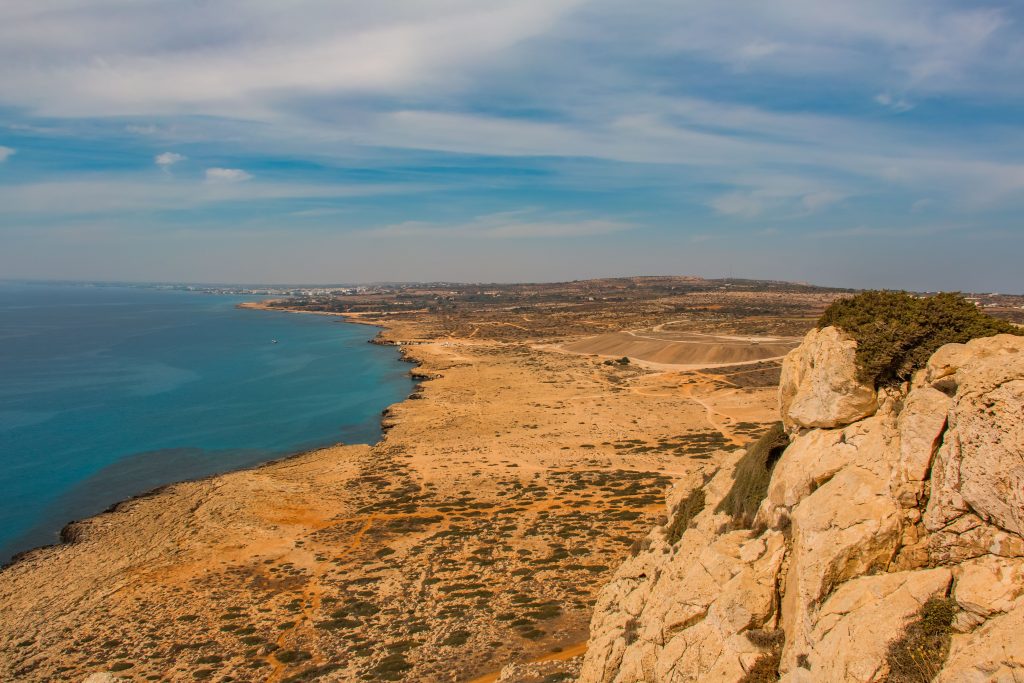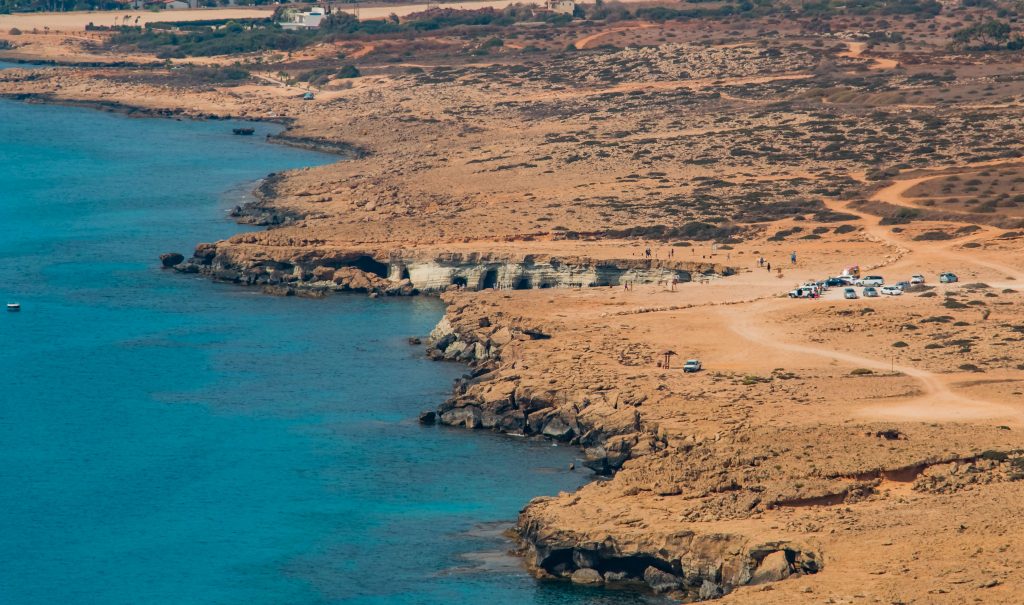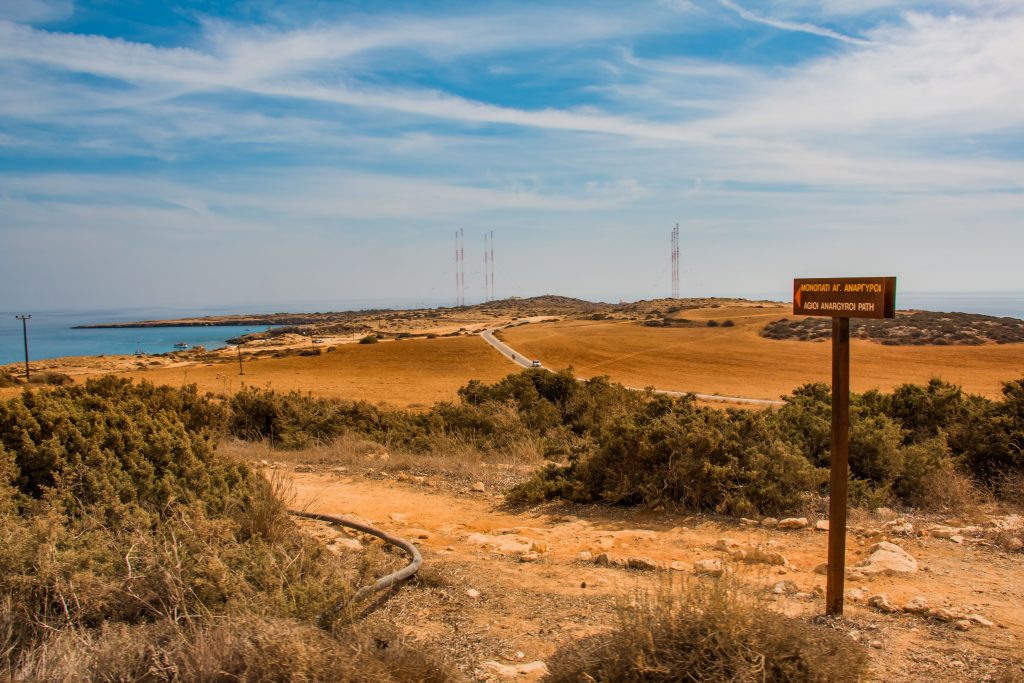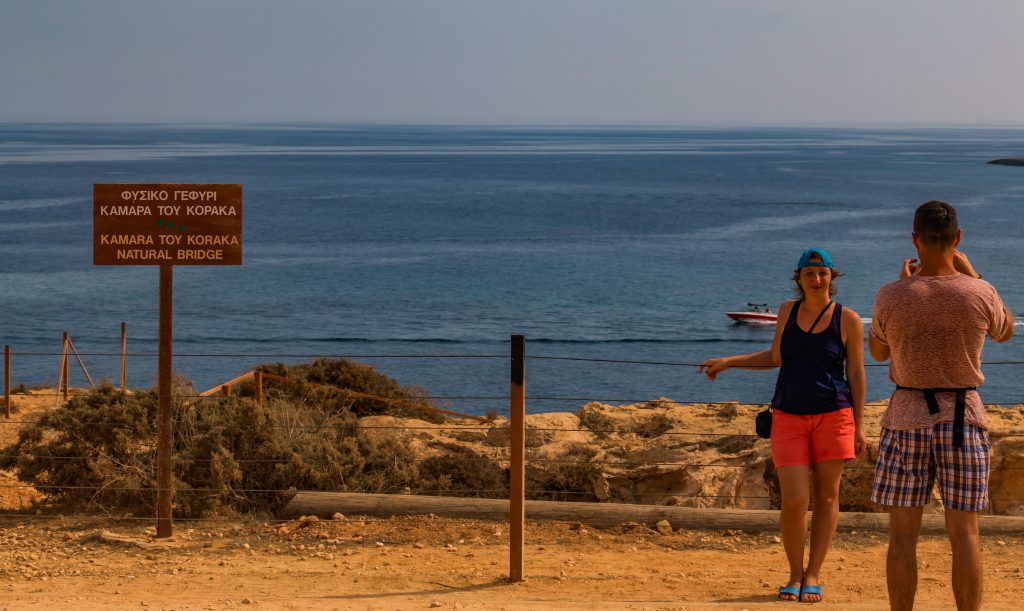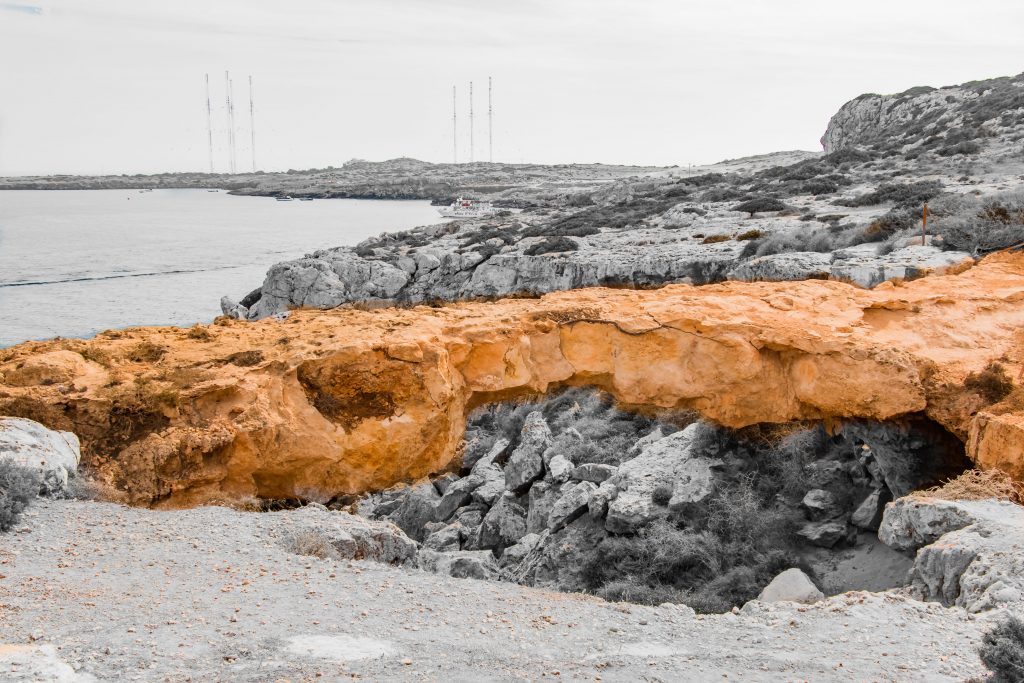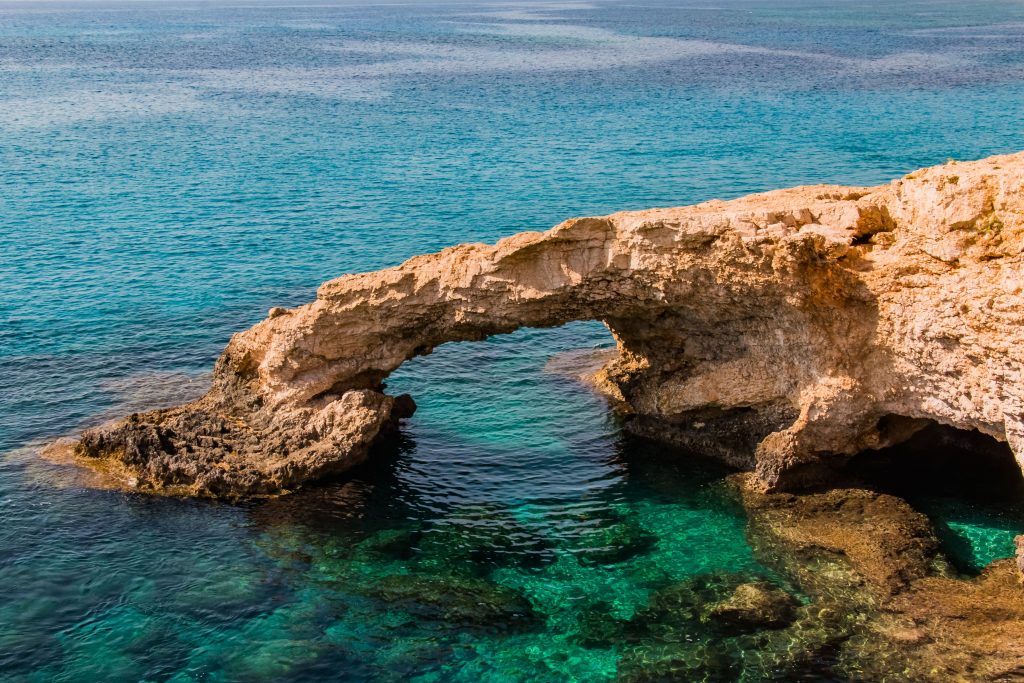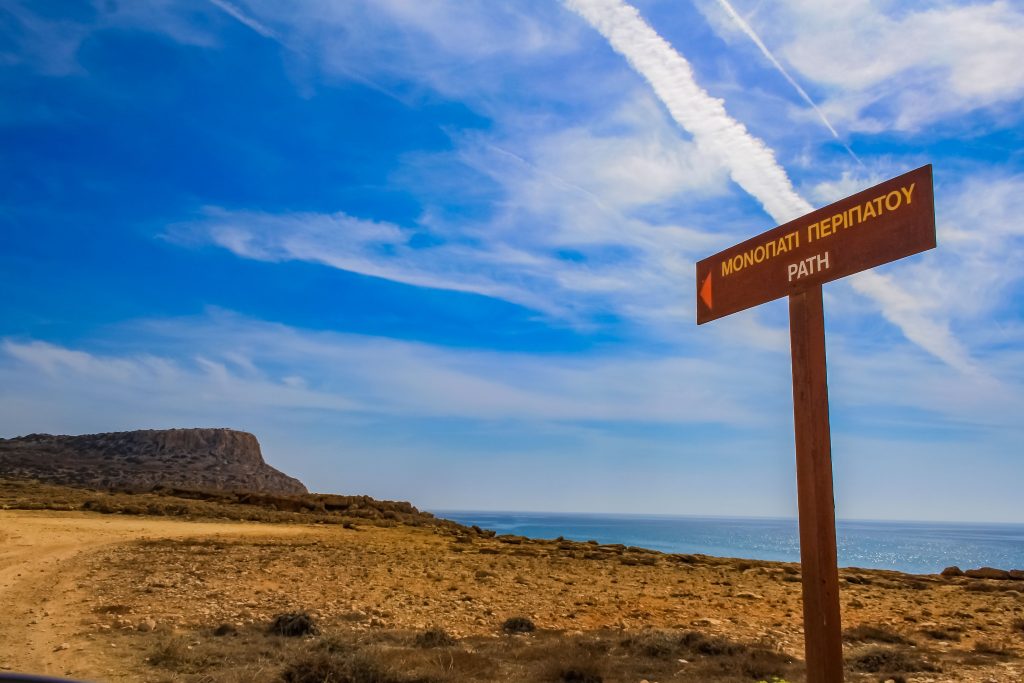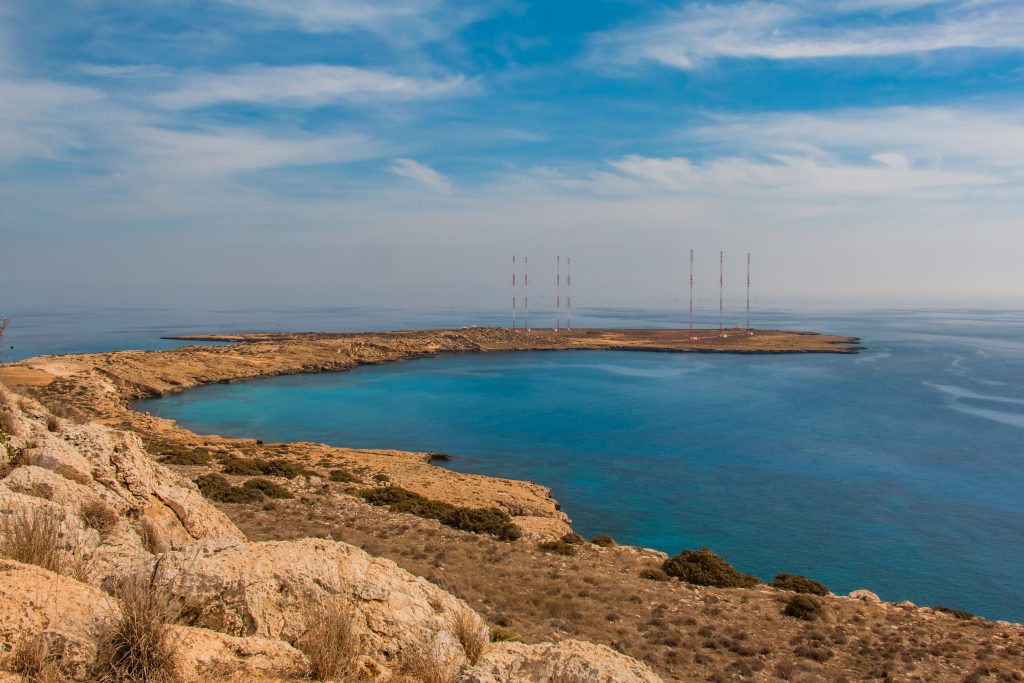Cavo Greco
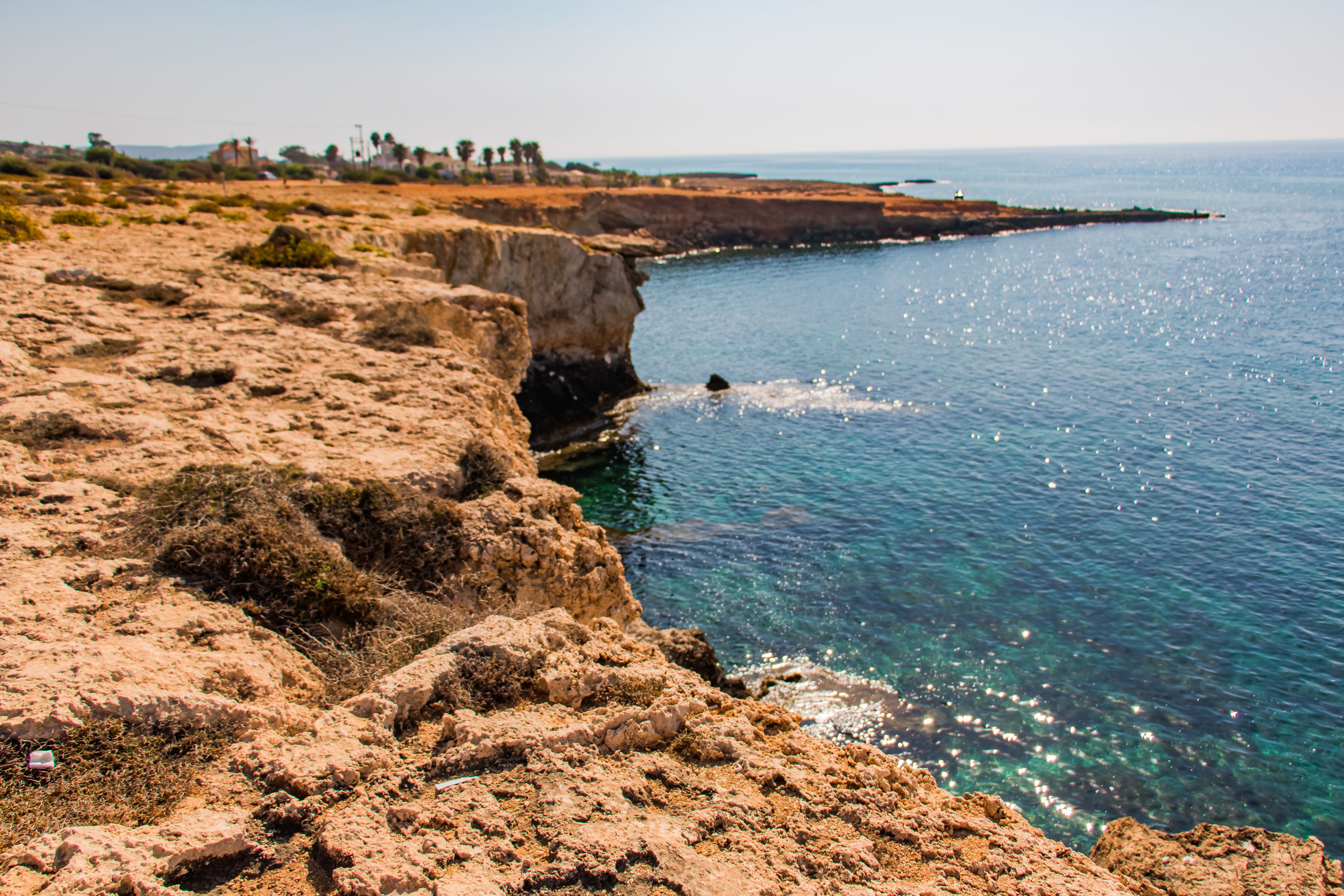
Cavo Greco, a natural attraction of the island, is a headland in the southeastern part of Cyprus between and ten kilometers away from two popular destinations of Famagusta province, Ayia Napa and Protara.
Driving the coastal tourist route of the area and where the map literally ends, the visitor approaches the easternmost point of the island, the cape Pidalion or better known as cape Cavo Greco,that was once submerged under the sea.
There were myths that gave birth to stories about a monster lurking in these waters, destroying the fishermen’s nets however the last decades’ excavations have uncovered evidence that in reality this was home to one of the oldest Neolithic settlements of Cyprus. Many shipwrecks have been found and excavated around the area.
The rocky cape Cavo Greco is 385 hectares of unspoilt natural beauty and due to its flora and fauna it has been declared a National Park and it is included in the European Natura 2000 program.
Of the almost 2000 plant species present in the island of Aphrodite, the 141 subspecies of plants and flowers thrive only in this region like the anthemis, wild garlic, bosea cypria etc. while 71 species of fauna, including foxes, rabbits, hedgehogs, different species of reptiles, bats and a wide variety of butterflies and other insects which are quite rare, and some protected dolphins in the sea area, and many migratory birds find refuge in the wild corners of the cape throughout the year, constituting the natural paradise of Cavo Greco.
The whole cape is highly appreciated by hikers and bikers as this is the start or part of many footpaths through pines and cypresses, which are routes of the European path E4. The more adventurous amongst us can walk in the heart of the cape or climb to the highest points, as well as there’s an easy trail of about 2 km, which passes from the southeast coast of the cape, and is part of Aphrodite Cultural Route. Moreover, there is a known route that ends in the Cyclops Cave, immediately after the small picturesque chapel of St. Anargyroi.
The visitor has the chance to relax and admire the landscape and the views from one of the many specially designed benches that have been placed on the cape. There is also an old lighthouse, constructed by the British, which is one the first two that operated on the island, and nowadays it hosts civil marriages for people from all over the world.
Many visitors choose to sail around Cavo Greco and swim near the dozens of the homonymous sea caves that nature has sculpted throughout the eons on the limestone rocks, called “palaces” by the locals. The underwater landscape is full of unexplored gorges with marine organisms’ fossils and caverns suitable for diving since the water’s temperatures range from 16 degrees Celsius (in the winter) up to 28 degrees Celsius (summer) and is one of the cleanest coastlines and waters with visibility up to 40 meters.
No matter the time of the year Cavo Greco offers a unique and wild landscape while the plethora of available activities will satisfy everyone.

